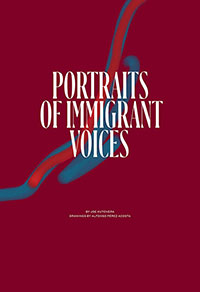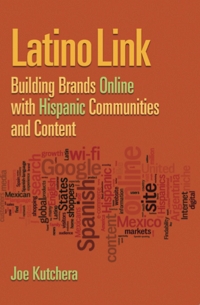This article originally appeared in the Fordham Business Review, which I wrote while doing an internship in Puerto Rico. Click here to read the first and third posts in the series.
Cultural Impact: Beyond Language
José Molina illustrates that communicating in English goes way beyond language. American business people respect interrupting and getting your point across; whereas, in Latin America they value position power and formal hierarchy.
“The higher you are in the organization, the more you need to be persuasive [in English]. The way in which you present things is critical. You have to understand not only the language but also the cultural differences. For example, in Latin America there is more respect for authority. Assertiveness is not as valued as respect is. So, if you disagree with an authority figure, you have to do it in a proper way. In North America you have to be assertive. You have to behave as if everyone is the same in the meeting. You have to speak your mind. The proper way is not as important as saying what you have to say.”
“I don’t know if this is only in Warner-Lambert or in every company, but they tend to interrupt meetings very much. They don’t wait until you have finished. In Latin America, this is a big difference. Not in the Caribbean. In the Caribbean everybody talks at the same time.”
Molina continues by saying, “I like that [in the U.S.] you are invited to speak your mind, in a less formal environment. In Latin America, it’s more formal. For example, here you do not use titles. You don’t see titles on the doors. Your academic title? You don’t use that – just the name. In the day to day relationships you use the first name of the person, even with the president. For example, everybody calls the CEO of our company Mel. I like that. I think that it invites you to see everyone as a person in the company.”
Ruben Lugo López differentiates the friendly mood in Puerto Rican offices with the straight-to-business approach in the U.S. “Puerto Ricans, like Latinos, would like to know more about you. They care more about your feelings and personal life. When you come in the morning and they say good morning, they would also like to know how your kids are doing. How’s he doing in school? Did you watch the soap opera last night? And you start talking for about, let’s say, ten or fifteen minutes, and you think you are loosing time because it’s time for business . . . working time. It’s not. The people need this to set that climate. Once they feel that they know each other and what happened in the last couple days then they start working.”
Valuing personal relationships can also be seen in how bosses treat their employees Dr. Calem says. “Loyalty is a major value here. The bosses that were good to their people, respected their people, and functioned as father figures were very successful. Traditional corporations behave like a father figure.”
How do Puerto Ricans learn about these cultural backdrop of business in the United States? Dr. Carmen Judith Nine-Curt, a retired professor and Department Chair of English as a Second Language at the University of Puerto Rico and Inter-Americana University, finds that the English-language textbooks implicitly teach American culture behind the English.
“The business books that we used at the University of Puerto Rico are all published in the States and written by Americans. So the business models that we use are totally North American. I think the same thing happens with teacher training. The whole mentality in the education school comes from the States.”
Numerous differences in non-verbal communication lie beyond language barriers which, according to some estimates, constitutes up to 70% of all communication. Lugo López says, “What does this mean? [Ruben makes the same motion in both hands, palms upward, of squeezing an invisible ball.] Too many. If you have a business meeting in the States and say we have a problem (making the previous motion). Is this an arthritic problem? What’s that? Is there something in the hands? No. There are many people here. It’s crowded.”
Lugo López discusses the greater number of holidays and vacation days as another example of cultural impact. “Americans need to understand that Puerto Ricans are really hard workers, but we have some times and activities that are, for us, very important. This is cultural. For example, we have to celebrate almost every occasion in Puerto Rico.” These events include birthday parties, showers, mother’s day, father’s day, and election day.
At Coca-Cola in the U.S., there are usually fourteen paid holidays, whereas in Puerto Rico there are 16 public holidays and fifteen days of vacation. This includes free days for birthdays, Election Day, two days for college enrollment and court appearances, two days for a death in the family, one day for new property ownership, jury duty as needed, one day paternity leave, and eight weeks of maternity leave at 100% pay. Whereas in the U.S., there are generally only nine. Lugo López explains, “This is cultural shock.” This is not really about days off but rather how Puerto Ricans value spending time with their family and friends.
At the same time, Mr. Ortiz feels, Puerto Ricans absorb certain aspects of American business culture, particularly workaholism. “Americans tend to be more workaholic than the average Puerto Rican. Here we emphasize our family. You need to have time for your family. But this is contagious. So many people now turn into workaholics like Americans. You can see that workaholics spend more than 10 hours a day at the office. That is not a normal life.”
Both Dr. Nina-Curt and Mr. Molina agree that women have much more power in Puerto Rico than in Latin America. This is due to the influence of American individualism building upon the African matriarchal elements in the Puerto Rican and Caribbean culture. Mr. Molina says, “You see a lot of women professionals here in Puerto Rico, many more than in Latin America. They have much more access to universities.”
“The problem here is that we adopt the U.S. legislation related to sexual harassment that was intended for the U.S., according to U.S. culture and behavior. It’s exaggerated when you try to transfer that from culture to culture. For example, we had a worldwide policy related to sexual harassment. But when you read the examples of harassment, some of them are laughable. For example, in Latin America it’s normal for a man to greet a woman with a kiss on the cheek . . . to say hello.”
Another cultural difference that Mr. Molina noticed among Latin Americans is to take care of visitors when they do business in your home country. This includes picking them up at the airport, taking them to the hotel, and eating dinner with them. “You are never alone, unless you wanted to be,” Molina says. This may include a welcome letter from your co-workers with everyone’s phone numbers at work and home. But Molina found that Puerto Ricans behave more like American when he picked up his rental car and went to the hotel his first day in Puerto Rico.
Cultural Influence of the Nuyoricans
It’s not only American business people that have had a tremendous impact on “la isla del encanto” (the island of enchantment). The Nuyoricans, or Puerto Ricans that live in New York (or elsewhere), have had just as big an impact if not more. Because of their American citizenship, many Puerto Ricans move to the United States to work or attend university. They acclimatize to life in the States and return to Puerto Rico, changing the culture on the island more than the expatriates do.
Rodriguez, who spent nine years attending University and working in Boston, says, “The Nuyoricans learned that they could function in the U.S. work environment bi-culturally, talking in both languages and being fully bi-lingual. That’s how they learned to survive and to make it in the U.S.”
The Nuyoricans that return to Puerto Rico do so to rejuvenate national pride and have a dramatic cultural impact upon the island by bringing back methods for accommodating and balancing American culture with their own. The native Puerto Ricans then use these methods to merge their culture with the American.






